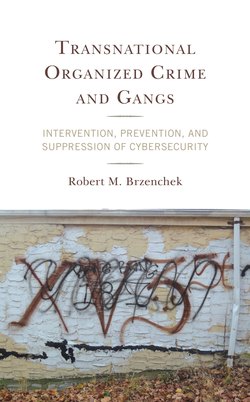Читать книгу Transnational Organized Crime and Gangs - Robert M. Brzenchek - Страница 12
На сайте Литреса книга снята с продажи.
Subculture Theory
ОглавлениеThe contemporary political climate has always influenced the overarching narrative within the scholarly community. The subculture theory is no exception. Subculture theory is derived from a collection of methodological research dating from the late 1940s. Implications from the theory have the power to change the social paradigm, as it is heavily steeped with ethical and moral considerations. The theory focuses on defining and describing deviance from a social perspective. Frontrunners of the theory utilize methodological means and controlled variables to analyze data as objectively as possible. However, we cannot ignore that the theory is born out of a specific system and historical framework. Generally, subculture theory explains the emergence of antiestablishment and delinquent behavior within a given system.
The notion of subculture as a theory was first advanced at the Chicago School of Sociology. It developed alongside such concepts as “collective representation” and “differential association.” Thus, subculture theory consists of many unique associated components. Much of the ethnographic studies at the Chicago School occurred during the time that anthropology and sociology became two distinct categories of study. Researchers working at the Chicago School, such as Emile Durkheim, published works within both disciplines. Durkheim established that group behaviors point to perceptions of self in relation to interactions with others, in essence “collective representation.” Later, Edwin Sutherland put forth “deferential association” whereby subculture is a functional reactionary attempt driven by social and economic contexts. Other important work conducted at the school was led by Dick Hebdige. Hebdige focused on aspects of subculture concerned with consumerism such as style and language. He ultimately determined that recreational drug use and avant-garde expression via style and language are a delinquent answer to hegemony. The assertion is that deviance and delinquency constitute a group response to social structure and are therefore normal in a class society. The base argument of work conducted at the Chicago School regards subcultures as crucial in the effort to understanding criminal motivation from a cultural perspective. Therefore, it is useful in terms of identifying predictable behavioral patterns.
Not long after the Chicago School discoveries, researchers at the Birmingham School built upon the subculture theory. The Birmingham school was born out of Britain’s postwar era system whereby social status was in flux for most citizens. Therefore, methodological developments at the school focused on youth subculture and ecology. Researcher A. K. Cohen reinterpreted Durkheim’s work by defining deviance along the lines of delinquency. He combined functionalism with Freudian influences. By incorporating psychoanalysis with sociology and anthropology to make judgments concerning the milieu of school-aged children attending the Birmingham School, he noted that youth from specific geographical locals tended to internalize failure. This led him to discover that the ignominy associated with a subpar set of social circumstances was the impetus for subculture. He ultimately described youth subculture as a cooperative adjustment to a class society. For Cohen, a class society was tantamount to a society whereby absent mothers and fathers generated a need for belonging and heritage. The politics surrounding Cohen’s findings led to further interest in assessing characteristics of parenting as a predictable measure of delinquency. Given the postwar climate in Britain, many middle-class citizens were forced to abandon traditional family values for the working-class lifestyle. Around the same time, Walter Miller also conducted research at the Birmingham School. His assessment of ethnographic and qualitative data led him to the theoretical conclusion that adolescents from working class families were devoid of mainstream values. For Miller, deviance was transferred to youth from marginalized communities whereby geography innately precipitated anarchic morals. The idea that family and community play a vital role in moral/criminalistic considerations is raised in Social Control Theory as well.
Contemporary work situates subculture theory in an expansive plane of discourse, whereby the social concept of subculture is exorbitantly generalized. The modern interpretation of the theory applies to any class of individuals within a given system whose deportment contradicts that of the hegemonic class. Thus, new avenues of research place more emphasis on the style and other consumerist aspects of antiestablishment culture, seeking to answer questions about the phenomenon of religious subculture, bohemian subculture, and hacker subculture. This “watering down” of subculture theory is pushing experts in the field to adopt innovative deferential terms to identify youth groups in order to maintain epidemiological utility with relation to deviance, delinquency, and criminalistic behavior. Moreover, the modern subculture theoretical ideation is not the focus of this work. However, it is prudent to mention at this juncture. Reconceptualizing a theory like subculture promotes restricted distinctions that in turn develop narratives highlighting fixed facets of our social reality. It is important to note that new ideations on a theory advance the knowledge base for the whole of humanity. However, this paper seeks to narrow the scope of subculture to the definition most congruent with the current understanding of criminal gangs while acknowledging that subcultures in and of themselves are not necessarily deviant or criminalistic. Criminal activity is repeatedly established as coexisting within the realm of subculture. The sum of the discourse on the subculture theory in relation to deviance and delinquency provide a basis for defining patterns.
